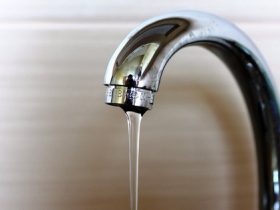Highly-Rated Approaches for Fixing Low Water Pressure in Your Home
BookThis article on the next paragraphs in relation to Dealing with Low Water Pressure in Your Home is especially attention-grabbing. You should check this stuff out.

Low tide pressure in your house can be an aggravating trouble, influencing everything from bathing to washing recipes. If you're experiencing weak water flow, there are several feasible causes and services to check out. In this overview, we'll review typical factors for low tide stress and functional steps to address the problem successfully.
Introduction to Low Tide Stress
Low water pressure takes place when the circulation of water from your faucets, showers, and various other fixtures is weaker than usual. This can make daily tasks more tough and much less reliable. Understanding the sources of low tide stress is essential to discovering the appropriate service.
Typical Root Causes Of Low Tide Pressure
Pipe Obstructions
Over time, pipelines can end up being blocked with mineral deposits, sediment, or particles, restricting the flow of water. This is a common concern in older homes with galvanized steel pipelines.
Rust
Corrosion within pipes can lead to leaks and reduced water pressure. Rust accumulation can constrict water circulation, specifically in maturing plumbing systems.
Faulty Stress Regulators
Stress regulators are in charge of keeping regular water stress in your house. If they malfunction, it can result in low tide stress or unequal flow throughout the house.
Local Water Supply Issues
Often, the problem exists outside your home. Municipal water system problems, such as main line leaks or upkeep job, can momentarily lower water pressure in your area.
How to Detect Low Tide Stress
Inspecting Faucets and Components
Start by checking the water stress at different taps and fixtures throughout your home. If the problem is isolated to details locations, it might show local problems.
Evaluating Pipes
Check noticeable pipelines for signs of leaks, rust, or blockages. Take notice of any unusual sounds, such as banging or rattling pipes, which could indicate issues within the plumbing system.
Consulting with a Plumber
If you're not able to pinpoint the source of low tide pressure, think about employing an expert plumber to perform an extensive inspection. They can identify underlying issues and suggest appropriate services.
Do It Yourself Solutions to Deal With Low Water Stress
Cleaning Aerators and Showerheads
Natural resources can accumulate in aerators and showerheads, lowering water circulation. Eliminate and clean up these elements frequently to boost water stress.
Flushing Hot Water Heater
Debris build-up in the hot water heater can restrict flow and decrease effectiveness. Flushing the container occasionally aids get rid of debris and keep optimum performance.
Checking Stress Regulator
Ensure that the stress regulator is working correctly. Readjusting or replacing the regulator can aid restore correct water stress throughout your home.
Clearing Clogs in Piping
For small clogs, attempt utilizing a plumbing serpent or chemical drainpipe cleaner to clear blockages in pipelines. Beware when utilizing chemicals and adhere to security guidelines.
When to Call a Specialist Plumber
If DIY efforts stop working to solve the issue or if you suspect considerable plumbing issues, it's ideal to seek help from a qualified plumber. They have the experience and tools to deal with complicated concerns safely and successfully.
Safety Nets to Preserve Water Pressure
Normal Maintenance
Schedule routine maintenance for your plumbing system to stop problems such as corrosion, leaks, and obstructions. Addressing minor issues early can help stay clear of even more considerable repair work in the future.
Installing a Pressure Booster
Think about installing a stress booster pump to enhance water pressure in areas with constantly reduced circulation. This can be specifically helpful for multi-story homes or properties with high-demand fixtures.
Tracking Water Usage
Be mindful of water use routines and stay clear of overtaxing the plumbing system. Easy modifications, such as shocking showers and washing tons, can assist preserve appropriate water stress.
Conclusion
Handling low water pressure can be frustrating, yet determining the underlying reasons and carrying out suitable remedies can restore ideal flow throughout your home. Whether it's cleansing aerators, checking pipelines, or talking to a plumber, taking aggressive actions can guarantee a consistent supply of water for your day-to-day demands.
How to Fix Low Water Pressure In Your Home
Municipal Water Supply Issues
Scheduled maintenance, high demand, and water main breaks are all potential causes for low water pressure within a city or county’s water lines. While there’s not much you can do to personally fix a problem with your city or county’s water supply system, you can play a big role in documenting the issue and alerting those who can.
How to fix it:
Ask your neighbors if they are experiencing any issues with low water pressure. If multiple homes are affected, it’s likely related to the city’s water line.
Contact the local Water Authority to see if there is any maintenance taking place that might be affecting your supply. Also let them know of your specific issues. If other homeowners report the same issues, they’ll know that there could be a larger issue to look into.
Faulty Fixtures
A damaged or clogged shower head, faucet or appliance is the first thing we’d suggest checking, especially if low water pressure appears to be isolated to a specific area of your home.
How to fix it:
First, turn off the main water supply to your home.
Check the affected appliances for build-up or debris. In the case of a faucet, you can simply unscrew the aerator at the tip of the faucet. Showerheads should be fully detached from the water pipe.
While the appliances are detached, you may want to check the water supply to determine if the fixtures were in fact the issue.
To clean, soak the showerhead or aerator in vinegar and brush off any visible debris.
Reattach the fixtures and check the water pressure again. If it is still low, there is likely a deeper issue at hand, which can be determined by a professional plumber.
Pipe Obstructions
Mineral deposits, rust or other debris within water pipes can lead to blockages or corrosion over time.
How to fix it:
When you think of a clog, you probably think of a drain clog. While there are many DIY solutions to clearing a drain, clogs in a water pipe will almost always require the help of a professional plumber. A plumber will be able to locate the affected pipe and clean out any debris or mineral deposit buildup. In severe cases, the pipe may need to be replaced. Your plumber might also recommend a water softening system to remove the minerals from your home’s water supply that can contribute to pipe blockages over time.
Plumbing Leak
Undetected water line leaks can divert water away from your residential pipes, reducing the water pressure in your fixtures.
How to fix it:
Check your water meter by turning off all water sources and monitoring the meter for any movement, which could be a clear indicator of a potential leak.
Check all visible pipes for signs of leaking, including water stains, active dripping or damp spots around the pipe.
Inspect fixtures, including faucets and showerheads, for any drips.
Test the pressure but recording the pressure with the main water valve shut off. Leave off for a few hours and test again. A significant drop in pressure is a clear sign of a leak.
https://kiddcoplumbing.com/plumbing-blog/how-to-fix-low-water-pressure/

How to Fix Low Water Pressure In Your Home
Municipal Water Supply Issues
Scheduled maintenance, high demand, and water main breaks are all potential causes for low water pressure within a city or county’s water lines. While there’s not much you can do to personally fix a problem with your city or county’s water supply system, you can play a big role in documenting the issue and alerting those who can.
How to fix it:
Faulty Fixtures
A damaged or clogged shower head, faucet or appliance is the first thing we’d suggest checking, especially if low water pressure appears to be isolated to a specific area of your home.
How to fix it:
Pipe Obstructions
Mineral deposits, rust or other debris within water pipes can lead to blockages or corrosion over time.
How to fix it:
When you think of a clog, you probably think of a drain clog. While there are many DIY solutions to clearing a drain, clogs in a water pipe will almost always require the help of a professional plumber. A plumber will be able to locate the affected pipe and clean out any debris or mineral deposit buildup. In severe cases, the pipe may need to be replaced. Your plumber might also recommend a water softening system to remove the minerals from your home’s water supply that can contribute to pipe blockages over time.
Plumbing Leak
Undetected water line leaks can divert water away from your residential pipes, reducing the water pressure in your fixtures.
How to fix it:
https://kiddcoplumbing.com/plumbing-blog/how-to-fix-low-water-pressure/
Do you enjoy reading about 10 Reasons for Low Water Pressure in Your House? Leave feedback below. We would be glad to know your feelings about this blog entry. Hoping that you visit us again in the near future. Sharing is caring. One never knows, you may just be doing someone a favor. We thank you for reading our article about Low Water Pressure in the House?.
Call